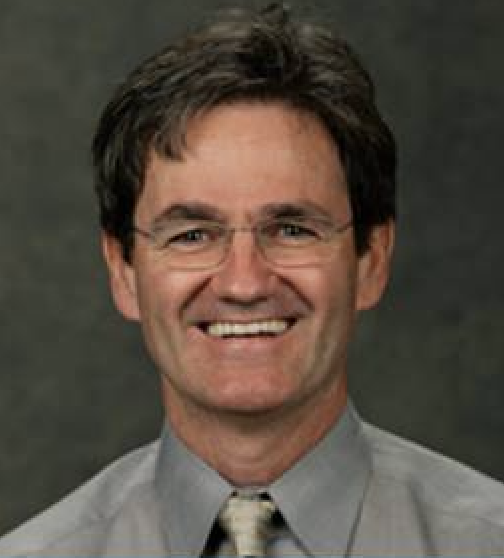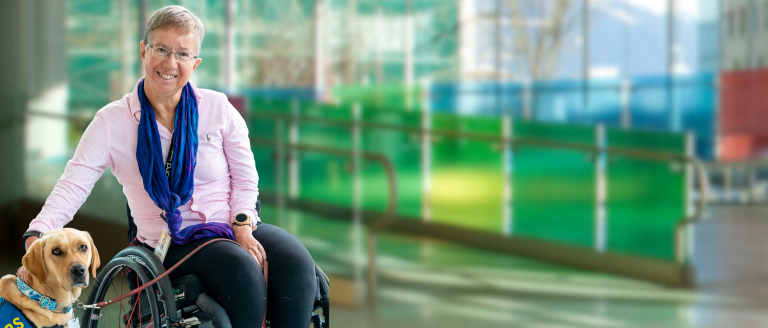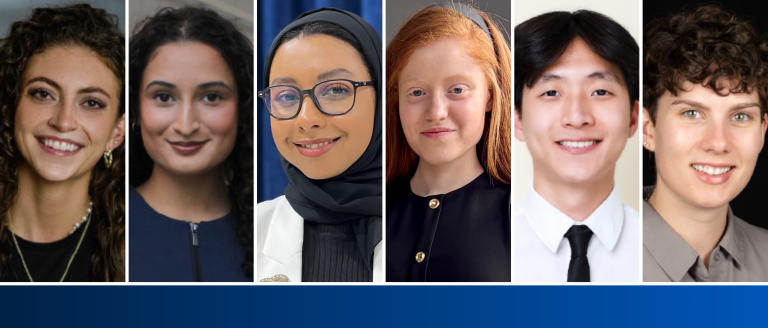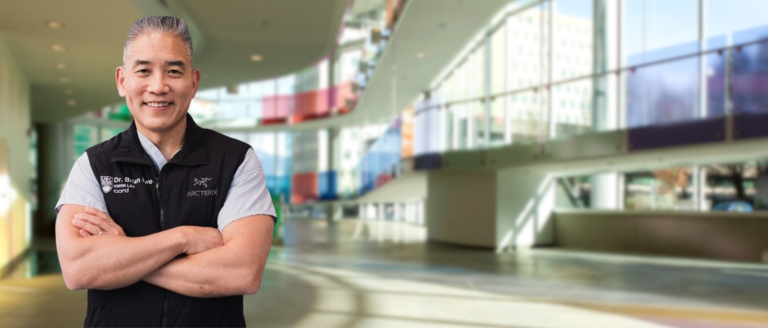
When a young collegiate hockey player found himself sidelined by an injury, he never imagined the setback would ignite a passion that would lead to a distinguished 42-year career in orthopaedics.
After 33 years at UBC, Associate Professor Dr. Bill Regan retired from the UBC Department of Orthopaedics on June 30, 2024. Dr. Regan has had a profoundly influential career, impacting hundreds of trainees from around the world. He has provided tertiary care in upper extremity and sports surgery for decades and has served the orthopaedic community in various capacities, including administrative roles at the university and important positions as a team physician. Dr. Regan is currently the head team physician for the Vancouver Canucks. He has been part of the Canucks medical staff since 2000 and previously served as an orthopaedic surgeon for the BC Lions and the Vancouver Grizzlies in the 1990s.
“As a colleague, Bill was very easy and fun to work with. He had a saying he often used that illustrates this. Sometimes we would be operating on the same day, and he would pop into my OR between cases to say hello. On departing, he typically would say “Give ‘er hell boy” before exiting. It was like a coach encouraging a player on the sidelines as he was sent in. It always brought a smile to my face.”
— Bob Hawkins, Clinical Professor Emeritus, Arthroscopy Division, UBC Department of Orthopaedics
Dr. Regan joined the UBC Orthopaedics Faculty in 1991, bringing valuable expertise acquired from fellowships in sports medicine at UBC, as well as in upper extremity surgery at the Mayo Clinic and St. Michael’s Hospital. He earned his Doctor of Medicine degree from the University of Toronto and completed his residency in orthopaedic surgery at the University of Western Ontario. In addition to his extensive practice focused on knees, shoulders, and elbows, he played a key role at the Allan McGavin Sports Medicine Clinic, a renowned tertiary care facility for sports medicine.
“My first encounter with Dr. Bill Regan was in 1988 as chair of the Canadian Orthopaedic Association Membership Committee when I was tasked with reviewing his application. Even at that early phase in his career, his future potential was recognized by all. We later welcomed Bill to our small orthopaedic sports injuries group at UBC hospital. Bill has proven to be a super talented surgeon and an amazing contributor in every way. Patients will be happy to know that, despite retiring from his administrative roles, he will continue to be clinically active.”
— Dr. Brian Day, Honorary Associate Professor, Arthroscopy Division, UBC Department of Orthopaedics
He has educated hundreds of residents and numerous fellows at UBC, earning a reputation as a calm and approachable surgeon in the operating room, which fosters an excellent learning environment for trainees. He has authored dozens of papers and book chapters and has been invited to speak at many conferences, often addressing complex elbow instability. His early contributions to research and publications on this topic have been significant and influential.
“I’ve known Dr. Regan since I was 12 years old. At that time, he was the sports fellow at UBC, working with my father, who was one of his preceptors. My father served as a mentor to Dr. Regan, and in turn, Dr. Regan has been an important mentor to me. He worked with me while I was in medical school on research and other projects, and he taught me while I was an orthopaedic resident at UBC. With over 20 years of experience as the head team physician for the Canucks, he has also provided invaluable mentorship in treating injured elite athletes, including NHL players. Dr. Regan is a shining example for the UBC orthopaedic community to aspire to!”
— Dr. Mark McConkey, Clinical Associate Professor, Arthroscopy Division, UBC Department of Orthopaedics
In addition to teaching, researching, and publishing, Dr. Regan served as division head for 22 years—first for the Division of Hand & Upper Extremity Reconstruction and then the Division of Arthroscopy. As director of the undergraduate program from 1995 to 2003, he led the department through a critical curriculum renewal, which now forms the foundation of our current problem-based learning program.
“I have had the privilege of working with Bill as a medical student, resident and orthopaedic surgeon colleague. Bill has always been a teacher, role model and friend to me. He has been instrumental in shaping my career and has always provided wisdom, mentorship and guidance. Bill’s calm and easy-going style has made him successful as a clinician, teacher and researcher. Thank you, Bill, for being an inspiration to many physicians, patients and high-performing athletes throughout your career!”
— Dr. Jordon Leith, Clinical Associate Professor and Head, Arthroscopy Division, UBC Department of Orthopaedics
As we bid farewell to a remarkable chapter at UBC, Dr. Regan shares the experiences that have defined his journey and the legacy he leaves behind. He offers wisdom from his extensive career, providing guidance and inspiration for the next generation of orthopaedic professors and sports medicine professionals.
What inspired you to pursue a career in orthopaedics, specifically arthroscopy and sports medicine?
I was fortunate to have my post-secondary education costs covered because I was a collegiate hockey player. Our team physician was also the USA Olympic Team physician. My love for athletics likely influenced my choice to pursue a career in orthopaedics focused on soft tissue, sports-related injuries and reconstructive upper extremity surgery.
Could you share a favourite memory or moment from your career?
In 1995, I performed an open rotator cuff repair for large tears on a healthy 53-year-old criminal lawyer who was reporting on a high-profile trial. The patient developed a post-operative infection that did not respond to multiple open debridements (the removal of damaged, infected tissue) and IV antibiotics to treat culture-positive staph aureus. Mouth organism cultures included staph mutans. The case was presented at Grand Rounds Infectious Diseases VGH where it was postulated that he was spitting into his wound, a variant of Munchausen’s syndrome.
Returning to basics, I questioned him again about any prior surgery, at which point he remembered a tooth implant procedure completed 10 years prior. His oral surgeon confirmed recent implant lucency in a phone call that same day. At my urgent request, the implant was removed the next day. Subsequently, the wound rapidly closed by secondary intent, ending our nine-month nightmare!
One year later, with no rotator cuff remaining, he had pain-free 130 degrees forward flexion/abduction.
Takeaways:
As Sir William Osler once said, “Listen to your patients! They are telling you the diagnosis.”
Thirty years later, we still do not understand why some patients with massive cuff tears have near-full, pain-free shoulder function. Where is the pain coming from?
What advancements in orthopaedics are you most proud of contributing to during your time at UBC?
When I arrived in Vancouver, Drs. Day, McConkey, and Davidson were developing techniques in arthroscopic knee surgery at UBC. There was little to no upper extremity reconstructive arthroscopic surgery expertise or experience. I trained myself in arthroscopic techniques regarding the shoulder and elbow, which took an inordinate amount of time for each case and involved plenty of trial and error.
Over the last 35 years, the UBC orthopaedic group has been instrumental in training hundreds of residents and dozens of fellows nationally and internationally. I have always seen the importance of contributing to literature throughout the years.
What areas of your work or research would you like others to explore further?
I helped supervise a master’s student who recently completed his thesis on shoulder navigation systems, which I believe has a strong future in improving total shoulder arthroplasty. Further research into proper diagnostic shoulder and elbow techniques is also crucial so that we operate on patients, not MRIs.
What emerging technologies in orthopaedics excite you the most, and why?
Augmented reality in upper extremity surgery will advance the discipline. Arthroscopic-assisted upper extremity joint arthroplasty will also be exciting in the future. The role of stem cell research (used in Pro Sport) may, in 10 years, be a game changer, like Biologics have become for those with seropositive arthritis.
What advice would you offer to new faculty members just beginning their careers?
You will all be well-trained.
Your knowledge, however, must be in lockstep with the art of medicine. You will benefit so much if you enjoy people and embrace the human condition. After all, you will all see the best, and sometimes the worst aspects, of humanity all wrapped up in any one patient.
As head team physician of the Vancouver Canucks, what are the most common injuries you see among hockey players? What advice would you give to aspiring sports medicine professionals?
Pro hockey is an exciting, yet violent, contact sport. As a result, injuries can, and do, occur literally from head to toe. Post-traumatic concussions remain the most devastating and elusive injuries to manage.
I have been a team orthopaedic surgeon for the BC Lions, Vancouver Grizzlies, and now Canucks over the past 32 years.
Anyone aspiring to look after pro athletes must first leave their ego at the door. Otherwise, it will be stomped on many times.
No one person manages a pro team. It takes a village. I have always been so grateful for the help and expertise offered by my colleagues. It would not be possible to manage a team without it! Never forget that.
Like anything in life, the most challenging things we do are also often the most rewarding. This is no exception.
How do you plan to enjoy your retirement from UBC Orthopaedics?
I am not fully retired yet. I will let you know when that happens!
I don’t think that I’ll ever fully retire. Instead, I’ll transform or morph into doing something new and equally fascinating! I’m not hooked on golf or the beach. Stay tuned!
What is something that we might find surprising to learn about you?
I grew up in a small mining town of less than 1000 people in Northern Ontario (Garson) and still return to my roots every summer. Something else that may be surprising is that my undergraduate BA major was “The Classics” with a biochemistry minor—not the other way around!
Do you have any final reflections or messages that you would like to share?
I often think to myself when operating on a patient, advising family members, or sewing up a pro athlete, “Is everyone here sure that a kid from Garson Mine is allowed to do this?!” That said, before I begin any operation, I vow to do the best possible procedure I can because it is such a privilege! We all share that as surgeons.
I am acutely aware of the adage to follow the “Golden Rule.”
I am profoundly humbled and proud to have had the opportunity to fulfil my dreams and aspirations within the UBC Faculty of Medicine in the Department of Orthopaedics.
My only hope is that each of you realizes a similar reward!
No regrets.







